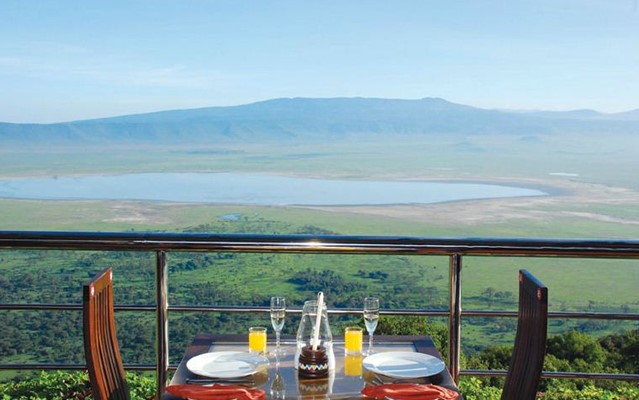Tanzania is an East African country known for its vast wilderness areas. They include the plains of Serengeti National Park, a safari mecca populated by the “big five” game (elephant, lion, leopard, buffalo, rhino), and Kilimanjaro National Park, home to Africa’s highest mountain. Offshore lie the tropical islands of Zanzibar and Mafia Marine Park, where whale sharks swim through reefs.
Capital: Dodoma
Dialing code: +255
Currency: Tanzanian shilling
Population: 49.25 million (2013)
Ngorongoro ConservancyTanzania
Ngorongoro Crater is a large and unbroken volcanic caldera. It is one of the most spectacular safari destinations in Africa, with incredible scenery and game viewing.
With 265 square kilometers, being the largest crater in existence and having a diameter of 20 kilometers, it is the home for 40,000 animals, including the big five. The caldera also contains perennial swamps which are an important migratory point for flamingos, and contains two patches of dense acacia woodlands called Lerai and Laindi forests. In the area, natural phenomena contain the deep water lakes of Embagi, waterfalls of Munge, the active volcano of Ol Donyo Lengai, and the shifting sands. Some of the earliest archeological finds containing Neolithic graves and rock workings have been aptly described as one of the wonders of the world. Among the exceptional bird life can be found Lammergeyer, Vereaux eagle, Egyptian vulture, rosy breasted long claw, golden winged sunbird, eastern double collared sunbird and Abyssinian night jay.
Ngorongoro Crater is a large and unbroken volcanic caldera. It is one of the most spectacular safari destinations in Africa, with incredible scenery and game viewing. The crater is 610m deep and the floor is 260km squared. The steep sides of the crater mean that it has become a natural enclosure for a very wide variety of wildlife, including most of the species found in East Africa. Most of the lodges are built high on the crater rim and afford amazing views over and into the crater, the perfect location to watch the infamous African sunset.This is one of the most magnificent tourist destinations in Africa unparalleled in its distinguished scenic beauty, wildlife and atmosphere. The Ngorongoro Conservation Area (NCA) is an area situated 180km west of Arusha in the Crater Highlands region of Tanzania.Land in the conservation area is multi-use, it is unique in Tanzania as the only conservation area, providing protection status for wildlife whilst allowing human habitation. The NCA is usually visited on the return journey from the Serengeti to Arusha. Stunning views and unique landscape are a certainty when visiting this spectacular region.
Game Viewing + Activities
A population of about 25,000 large animals, including the highest density of mammalian predators in Africa, lives in the crater. These include black rhinoceros, hippopotamuswhich are usually very uncommon in the area. There are also wildebeest, zebra, eland, Grants and Thomson’s gazelles.The crater has the densest known population of lion. On the crater rim are leopard, elephant, mountain reedbuck and buffalo. Lake Magadi, filled by the Munge river in the centre of the crater is, like many in the rift valley, a soda lake supporting flocks of flamingo and a variety of other water birds;. More than a 100 species of bird not found in the Serengeti have been found in the crater including; ostriches, kori bustards, secretary birds, and crowned cranes as well as vultures, egrets, herons and geese.The rainy season lasts from November through to May, with the dry season running from June through to October. June and July are the coldest months of the year. The rim of the crater is often shrouded in dense cloud that pours over the crater into the vastness below.
